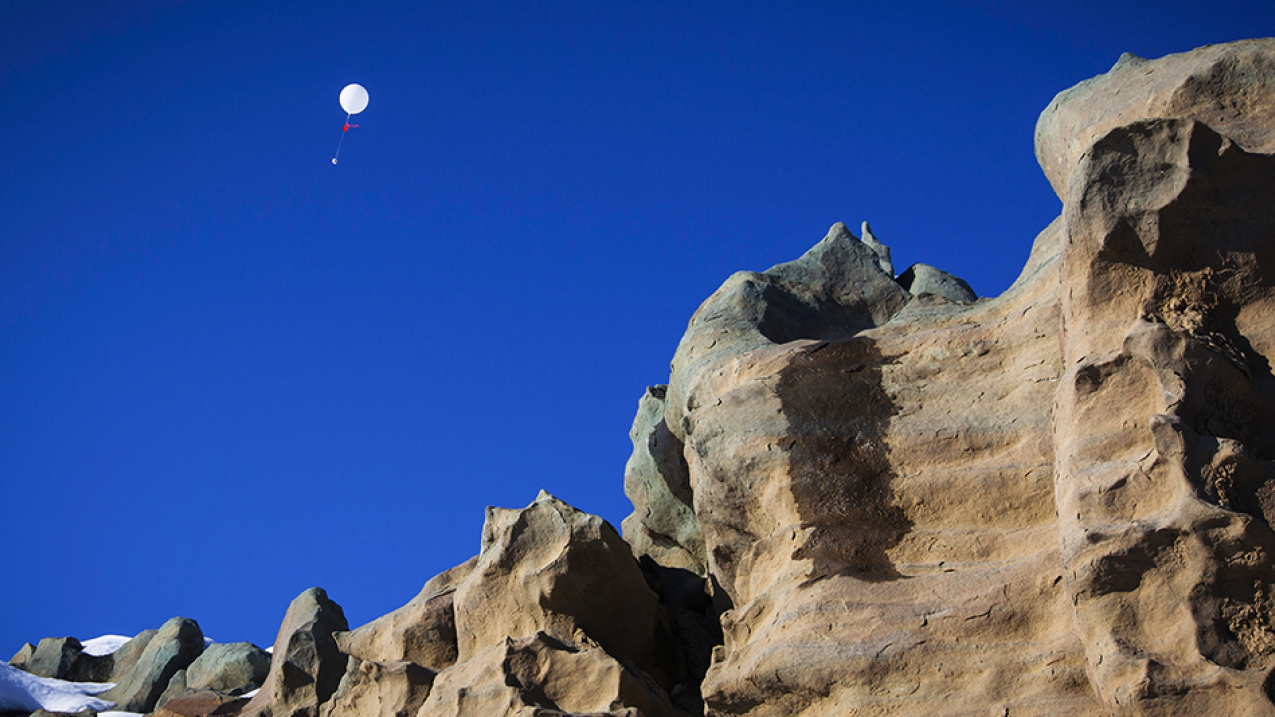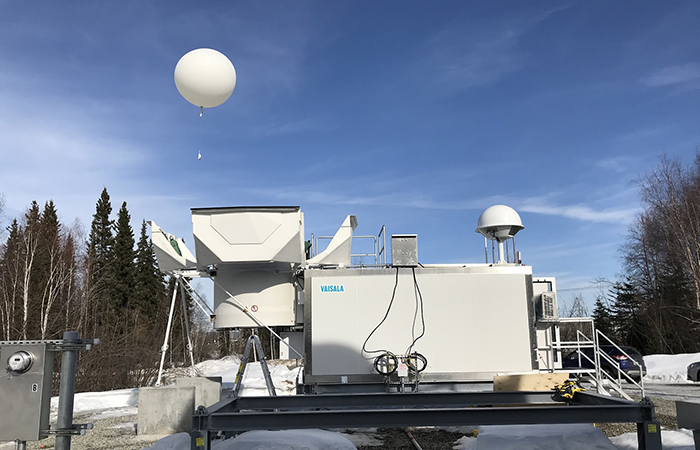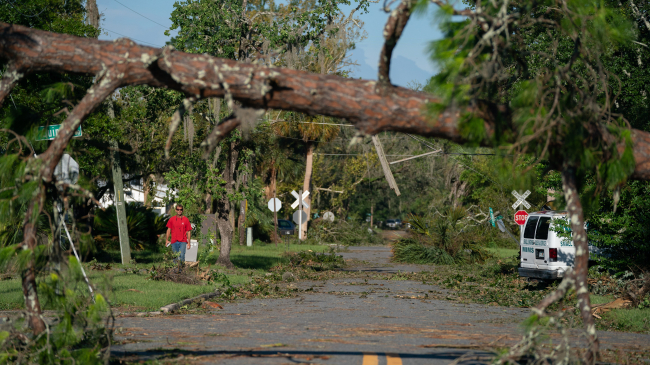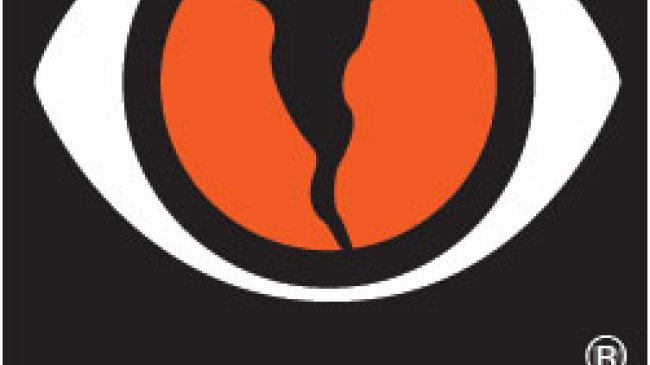Demonstration of new technology underway in Alaska

A weather balloon fitted with an ozonsonde – an ozone-measuring instrument – rises above the rock formations of Fantasy Canyon, Uintah Basin, Utah in 2013. NOAA's National Weather Service is now piloting an initiative to automate balloon launches in Alaska (Spring 2018). (Image credit: Patrick Cullis, NOAA/CIRES)
The trusty weather balloon has been an essential data tool for forecasters for nearly 90 years.
NOAA’s National Weather Service has launched these balloons since the 1930s to collect temperature, humidity and other data in the upper atmosphere as they sail through the troposphere and stratosphere.
Fitted with special data transmitters called radiosondes, balloons are launched twice a day at 92 sites across the U.S., including 13 in Alaska. Alaska launches generate data that are especially important to support downstream forecasts for the Lower 48 states.
The NWS is piloting an initiative in Alaska to automate the process of releasing weather balloons. Autolaunch systems are being deployed across Alaska through July 2020, with some already in service.
Why switch to automation? Here are six reasons why it makes good business sense:
1. Saves money
Who doesn’t love saving a buck? How about $1 million a year? That’s how much federal tax money the NWS anticipates will be saved by using autolaunchers in Alaska in the long run. This translates to $20 million in taxpayer savings over the lifespan of the Alaska autolaunch network.
It’s also cost-neutral. The initial purchase and installation of the Alaska autolaunch stations comes at no cost to taxpayers, as they are funded exclusively by the sale of government spectrum.
2. Saves time
Autolaunchers will allow NWS’ Alaska program to move into a modern staffing model better aligned with the needs of community decision-makers and core partners across government. Staff who currently spend up to four hours per day at each site launching weather balloons will be able to refocus their work on more pressing tasks such as supporting decision-makers in the field, providing weather support for emerging needs in the Arctic or for forecasting and communicating about ocean and ice, aviation weather, volcanic ash and tsunamis.
3. Improves data quality and availability
Autolaunchers are kind of like the postal carrier: No matter what the weather, they deliver. Manual launches in Alaska can sometimes be disrupted due to staff shortages. Autolaunchers ensure that balloons are launched as planned – twice a day at every site, every day of the year.
Automation also makes it easier to launch extra balloons to collect more data ahead of major weather events.
4. Works in a wide range of climates and environments
Autolaunch technology has been proven effective worldwide over the last 20 years, from the sweltering Australian outback to sub-Arctic Finnish Lapland. Initial tests in Kodiak, Alaska, show that autolaunchers are as effective as launches by hand and have a 98-percent success rate, which beats the agency’s target by two percent.

5. Provides longer career tracks and less isolation for NWS employees
The NWS’s 11 remote Weather Service Offices in Alaska are staffed by three people solely to launch weather balloons. The geographic isolation is tough on families and results in high staff turnover and ongoing vacancies. Autolaunchers offer these employees an opportunity to gain new areas of expertise and move into jobs with better career growth potential.
6. Operates on autopilot
Autolaunchers send up 24 balloons before they need to be restocked, taking vital upper-air observations for 12 days on autopilot. Restocking the autolauncher with balloons, gas and radiosondes only requires about an hour to accomplish.
More: Read the NOAA press release about our use of this new technology.




